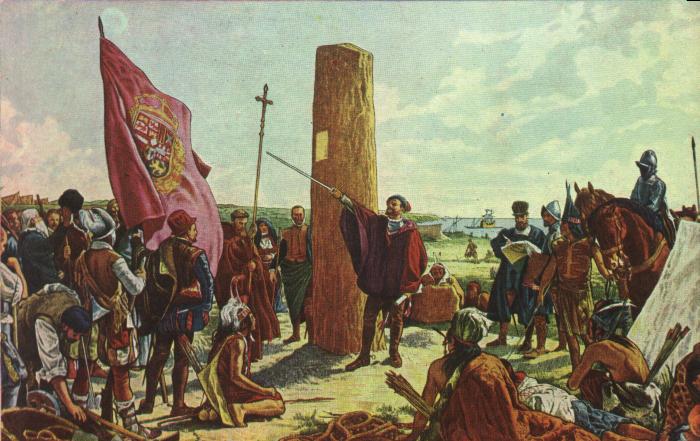The arrival of the Europeans meant an enormous surprise for the Native Americans, as well as an effort to discern whether the newcomers were divine beings or humans. Soon, doubt gave way to heroic resistance in the face of the evidence of the first massacres carried out by the invaders. However, the different conception of warfare, the use of firearms, the use of horses, and the epidemics caused by diseases brought by the conquistadors and unknown to the indigenous people all contributed to the victory of the newcomers. Entire populations were annihilated in the name of Christian culture, driven by greed and the desire for profit.



Exploitation of the Indigenous People
The “indio”, as the Spaniards called the inhabitants of these lands baptized with the name of America, became a means of production for the ambitions of the conquerors. In certain regions, such as the mining areas of Mexico and the High Peru, the exploitation was so ruthless that it nearly led to the extinction of the local population, prompting the conquerors to resort to the introduction of enslaved labor from Africa. The Africans were involuntary immigrants who made contributions to American culture.
Who lived in Argentina before the spanish?
Before the arrival of the Spanish, various indigenous peoples inhabited the region that is now known as Argentina. These indigenous groups had diverse cultures, languages, and ways of life. Some of the prominent indigenous civilizations and groups in the area included: Mapuches, Guaraníes, Querandíes, Diaguita-Calchaquíes, Comechingones, Wichi y Puelches.
Who colonized Argentina first?
The region now known as Argentina was first explored and colonized by the Spanish. The Spanish colonization of Argentina began with the arrival of Spanish explorer Juan Díaz de Solís in 1516. However, it wasn’t until 1536 that a formal attempt at establishing a permanent settlement was made by Pedro de Mendoza, who founded the settlement of Nuestra Señora Santa María del Buenos Aires (which would later become Buenos Aires).



The majority of the current Argentine territory had been a marginal zone of the Spanish empire. Unlike the regions of Mexico or Peru, these lands lacked precious metals or products of interest to the metropolis and remained outside the established trade routes for transatlantic commerce. The current Argentina initially belonged to the Viceroyalty of Peru. For centuries, the interests of the traders in Lima determined Spanish policy for these territories. The interests of Peruvian trade and those of the Spanish government complemented each other. The crown enforced its mercantilist policy by prohibiting overseas trade with Buenos Aires. Opening a port in Buenos Aires would have shifted all commerce in the territory to this area, to the detriment of Lima’s interests.
Commercial Monopoly and Smuggling



Spain had imposed a strict commercial monopoly in America that prevented different regions from trading with each other or with any power other than the Spanish empire itself. This situation strangled the economic development, included in the colonial system but marginalized from markets due to the distances and arbitrary royal ordinances. This greatly increased the cost of products, as the metropolis (Spain) acted as an intermediary between the producing countries like England and France and the consumers in these regions. Moreover, American producers could not sell their raw materials to European buyers. Prohibiting Buenos Aires from trading directly with England, the main buyer and supplier of the colony, meant depriving it of nearly all the benefits produced by international trade.
This situation led to the emergence of a profitable illegal economic activity that would essentially become the foundation of the Río de la Plata economy: smuggling. In 1680, the Portuguese established the Port of Colonia del Sacramento opposite Buenos Aires, which would become a privileged base for illegal trade. Driven by Portuguese and English interests, smuggling became a serious problem for the Spanish crown.
We hope this article has been helpful to you. If you have any questions, feel free to ask. We’ll catch up in the next post.
This article was edited from: Universidad de Buenos Aires – Escuela Superior de Comercio “Carlos Pellegrini” – Colección de documentales “Historia Argentina” Procesos socioeconómicos, políticos y culturales Director: Felipe Pigna.



This article was edited by the History.site team. We are from Argentina, so if you find any writing or translation errors, please let us know in the comments. Thank you!
